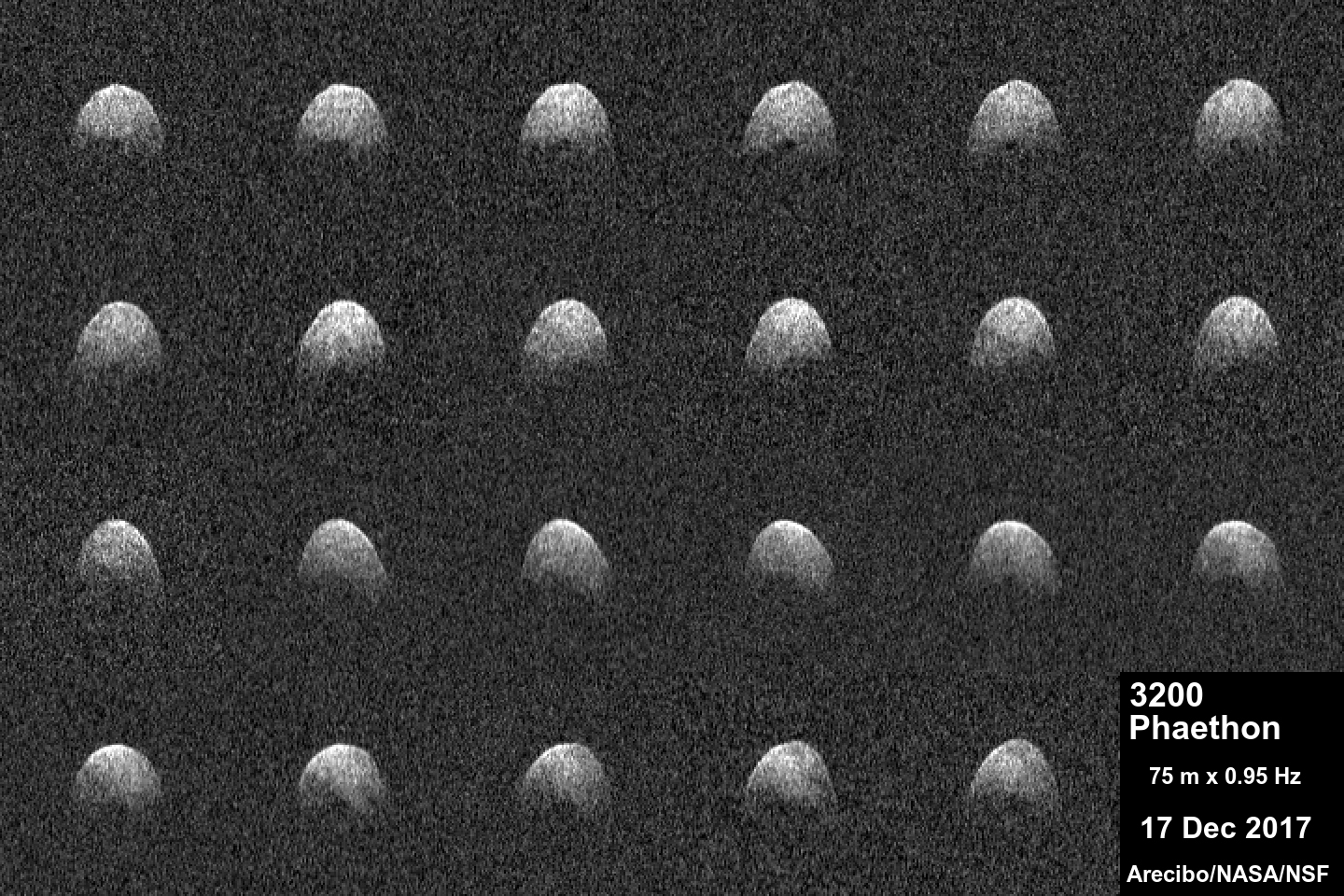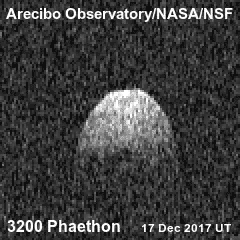Asteroid Phaethon's Earth Flyby, Closest Until 2093, Captured by Arecibo Observatory
Images from the Arecibo Observatory in Puerto Rico show a massive space rock's close approach to Earth on Dec. 16.
The asteroid 3200 Phaethon zipped to within about 6.4 million miles (10.3 million kilometers) of Earth, or about 27 times the distance from Earth to the moon. This was the space rock's closest approach to our planet since 1974 (when it also flew by on Dec. 16). Phaethon will not come that close to Earth again until Dec. 14, 2093. [In Images: Potentially Dangerous Asteroids]

The images, though grainy, have helped researchers clarify the size of 3200 Phaethon and some of its physical features, according to a statement from NASA. The rock appears to be roughly spherical, with a diameter of about 3.6 miles (6 km), or about 0.6 miles (1 km) larger than previous estimates, according to the statement.
The images of 3200 Phaethon show that it also has "a large concavity, or depression, at least several hundred meters in extent near its equator, and a conspicuous dark, circular feature near one of the poles," according to the statement. The dark feature could be a crater or a depression that does not reflect the light emitted by Arecibo's radar instrument, Patrick Taylor, a scientist at the Universities Space Research Association (USRA) and group leader for Planetary Radar at Arecibo Observatory, said in the statement. Arecibo has the most powerful radar system on Earth and is used by NASA's Planetary Defense Coordination Office to monitor "potentially hazardous asteroids," or PHAs. The observatory suffered "minor structural damage" when Hurricane Maria made landfall on Sept. 20.

"Arecibo is an important global asset, crucial for planetary defense work because of its unique capabilities," Joan Schmelz, of the Universities Space Research Association (USRA) and deputy director of Arecibo Observatory, said in the statement. "We have been working diligently to get it back up and running since Hurricane Maria devastated Puerto Rico."
Phaethon may have once been a comet, meaning it contained water ice near its surface that would sublimate as it flew by the sun. It's also likely that a trail of debris left behind by Phaethon is responsible for the annual Geminid meteor shower.
Follow Calla Cofield @callacofield. Follow us @Spacedotcom, Facebook and Google+. Original article on Space.com.
Get the Space.com Newsletter
Breaking space news, the latest updates on rocket launches, skywatching events and more!
Join our Space Forums to keep talking space on the latest missions, night sky and more! And if you have a news tip, correction or comment, let us know at: community@space.com.

Calla Cofield joined Space.com's crew in October 2014. She enjoys writing about black holes, exploding stars, ripples in space-time, science in comic books, and all the mysteries of the cosmos. Prior to joining Space.com Calla worked as a freelance writer, with her work appearing in APS News, Symmetry magazine, Scientific American, Nature News, Physics World, and others. From 2010 to 2014 she was a producer for The Physics Central Podcast. Previously, Calla worked at the American Museum of Natural History in New York City (hands down the best office building ever) and SLAC National Accelerator Laboratory in California. Calla studied physics at the University of Massachusetts, Amherst and is originally from Sandy, Utah. In 2018, Calla left Space.com to join NASA's Jet Propulsion Laboratory media team where she oversees astronomy, physics, exoplanets and the Cold Atom Lab mission. She has been underground at three of the largest particle accelerators in the world and would really like to know what the heck dark matter is. Contact Calla via: E-Mail – Twitter









